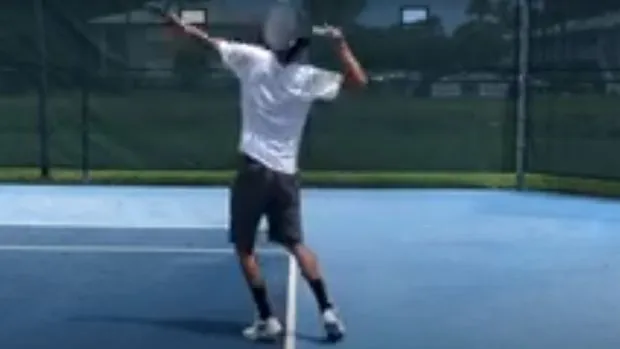What is a Foot Fault?
A foot fault is a rule violation in tennis that occurs when one player steps on the court boundary line (the baseline) while serving the ball. This illegal move can result in an immediate point penalty for the offending player—meaning they will lose that point regardless of whether or not they made good contact with their serve.
It’s important to remember that a foot fault also applies to any part of your body—including your feet and legs—that touches or crosses over the baseline during your serve.
Why are Foot Faults Called?
The main reason why foot faults are called is to ensure fair play between two competitors. By preventing players from stepping on or over the baseline during their serve, referees can help ensure that all points are won fairly and without interference from one player’s advantage over another. Calling foot faults can also help keep players safe by preventing them from getting too close to each other during rallies.
How Can Players Avoid Foot Faults?
Try Using a Smaller Service Box: Many tennis courts have designated areas for practice serves that are smaller than the regulation size. This will help you get used to hitting the ball in a smaller space and make it easier to keep your feet inside the service box when you are serving in a match.
Focus on Your Toss: The ball must be tossed up in the air to come down within the service box. If the ball is tossed outside, it is considered a fault. A good rule of thumb is to toss the ball up so that it reaches eye level when it comes down.
Make Sure You’re Hitting The Ball In Front of You: Many tennis players make the mistake of swinging their racquets back behind them before hitting the ball. This causes them to step forward out of the service box and commit a foot fault. To avoid this, focus on hitting the ball in front of you and keeping your feet inside the service box.
What Is The Service Box In Tennis?
The service box is a rectangle 21 feet long and 13 feet wide. The back line is the line at the back of the court that runs perpendicular to the net. The front line of the service box is the line at the front of the court that also runs perpendicular to the net. The service box is divided into two halves by the center line, which runs parallel to the net.
The server must start the serve with both feet behind the back line. When serving, the server may not step on or over any lines until the ball is hit. If the server steps on or over a line before hitting the ball, it is considered a foot fault.
How To Avoid Foot Faults On a Serve
Try Using a Smaller Service Box: Many tennis courts have designated areas for practice serves that are smaller than the regulation size. This will help you get used to hitting the ball in a smaller space and make it easier to keep your feet inside the service box when you are serving in a match.
Focus on Your Toss: The ball must be tossed up in the air to come down within the service box. If the ball is tossed outside, it is considered a fault. A good rule of thumb is to toss the ball up so that it reaches eye level when it comes down.
Make Sure You’re Hitting The Ball In Front of You: Many tennis players make the mistake of swinging their racquets back behind them before hitting the ball. This causes them to step forward out of the service box and commit a foot fault. To avoid this, focus on hitting the ball in front of you and keeping your feet inside the service box.
Conclusion
All in all, knowing what constitutes a foot fault and how it impacts play is essential for anyone looking to become proficient at playing tennis.
By understanding how this rule works and taking care not to step on or over the baseline during serves, players can help ensure fair competition and prevent unnecessary penalties from being called against them during matches.
